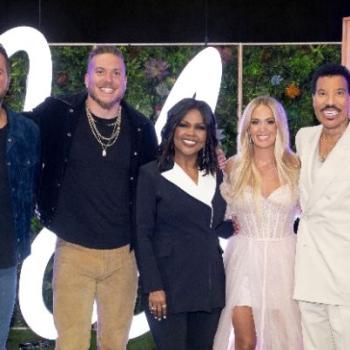Conclusion: The Mormon Next Door
Approaching 15 million members with some 28,660 congregations in 185 nations, countries and territories,[57] the Church is steadily growing. In fact, from 2000 to 2010 the Church's membership grew 18 percent in the United States alone.[58] Furthermore, our internal statistics show that there are moreactively practicing Latter-day Saints at church services today than ever before in our history.[59] Considering the rigorous demands of the Mormon faith amidst our culture of increasingly easy salvation, this growth is impressive. Of course, with growth come many new challenges. For example, aside from language and cultural challenges, there is the need to train and supply local leaders in countries where we have an emerging presence; the Church also needs to provide adequate worship facilities and materials such as Bibles, hymnals, and copies of the Book of Mormon.
Additionally, like other faiths, we have people who for one reason or another become indifferent or even hostile. We can do a better job of fostering mutual understanding with these people, no matter their beliefs. Naturally, the Church and its members experience real struggles and difficulties; nonetheless, we continually seek to be better and more Christlike.
Though Latter-day Saints strive for a high standard, we're obviously not perfect. But, as Roosevelt suggested, we do indeed make good citizens and good neighbors. Newsweek in 2005 described us as a "21st century covenant of caring."[60] We hope so. We want to contribute as followers of Christ to our communities and nations, wherever we may live. As fellow neighbors come to understand us, and vice versa, misperceptions and prejudices invariably diminish. In turn, meaningful bonds of community will solidify, helping make each of us better friends, citizens, neighbors and, most assuredly, better children of God.
:::page break:::
Endnotes
[1]Franklin D. Roosevelt, F.D.R.: His Personal Letters 1928-1945 (1950), 1480.
[2]Rod Dreher, "We Have a Lot to Learn from Mormons," Realclearreligion.org, posted Oct. 12, 2011 (accessed Apr. 23, 2012).
[3]Survey results continually suggest that many Americans remain unfamiliar with what Latter-day Saints believe. Most fundamentally, we worship Christ as the Savior and Redeemer of the world and the Son of our loving Heavenly Father. We accept His grace and mercy and seek to follow His example by being baptized (see Matthew 3:13-17), praying in His holy name (see Matthew 6:9-13), partaking of the sacrament (communion) (see Luke 22:19-20), doing good to others (see Acts 10:38), and bearing witness of Him through both word and deed (see James 2:26). By following Christ's teachings, we believe that all mankind may be saved through Christ's grace. Because Christ loves us, we believe that He has restored His original Church as described in the New Testament with modern-day prophets, apostles, miracles, and continuing revelation. These teachings undergird and inspire what Newsweek has called "a 21st century covenant of caring." To learn more about the doctrinal tenets of The Church of Jesus Christ of Latter-day Saints, visit Mormon.org or Mormonnewsroom.org/article/Mormonism-101.
[4]James E. Enstrom and Lester Breslow,"Lifestyle and Reduced Mortality among Active California Mormons, 1980-2004," Preventive Medicine 46 (2008), 135.
[5]Ibid.
[6]Ibid.
[7]Ibid.
[8]See Benjamin D. Horne, et al."Usefulness of Routine Periodic Fasting to Lower Risk of Coronary Artery Disease in Patients Undergoing Coronary Angiography," American Journal of Cardiology 102 (2008): 814-19; Benjamin D. Horne, et al., "Relation of Routine, PeriodicFasting to Risk of Diabetes Mellitus, and Coronary Artery Disease in Patients UndergoingCoronary Angiography," American Journal of Cardiology, 2012, in press.
[9]Ibid.
[10]Robert D. Putnam and David E. Campbell, American Grace: How Religion Divides and Unites Us (2010), 490.
[11]See Elizabeth Mendes, "Wellbeing Rankings Reveal State Strengths and Weaknesses Utah, Hawaii, Montana take top three spots in national wellbeing rankings," Gallup.com, posted Mar. 12, 2009 (accessed Apr. 23 2012); See also Rebecca Ruiz, "America's Best States To Live: Residents of these areas have a higher quality of life than others in the U.S.," Forbes.com, posted Mar. 11, 2009.
[12]Pew Research Center, Mormons in America: Certain in Their Beliefs but Uncertain of Their Place in Society, Jan. 12, 2012.
[13]Ibid., 12.
[14]Ibid., 32.
[15]Ibid.
[16]Ibid.
[17]Ibid.
[18]Op. Cit., Putnam and Campbell, 2010, 491.
[19]Op. Cit., Pew Research Center, 2012, 37.
[20]Ibid.
[21]George H. Gallup and Timothy K. Jones, The Saints among Us: How the Spiritually Committed Are Changing Our World (1991) 23.
[22]See Walter J. Goltz and Lyle E. Larson, "Religiosity, Marital Commitment, and Individualism," Family Perspective 25:3 (1991): 201-19.
[23]Linda J. Waite and Maggie Gallagher, The Case for Marriage: Why Married People Are Happier, Healthier, and Better off Financially (2000).
[24]Lee Davidson, "Utah Tops Nation in Traditional Family Categories," Salt Lake Tribune, Apr. 25, 2012.
[25]Op. Cit., Pew Research Center 2012, 16.
[26]Gary C. Lawrence, How Americans View Mormonism (2008), 34.
[27]See "The Family: A Proclamation to the World," Ensign, Nov. 2010, 129.
[28]Op. Cit., Pew Research Center 2012, 51.
[29]Ibid.
[30]Quoted in Hal Boyd, "Patriarchs among the Poets: Harold Bloom's Case for the Bible as High Literature," Deseret News, Sept. 23, 2011. Elsewhere Bloom has written that "Mormonism's best inheritance from Joseph Smith was his passion for education."
[31]Tim B. Heaton, Stephen J. Bahr, and Cardell K. Jacobson, A Statistical Profile of Mormons: Health Wealth, and Social Life (2004), 44.
[32]Tim B. Heaton, "Vital Statistics" in Latter-day Saint Social Life: Social Research on the LDS Church and its Members, (1998), 127.
[33]Doctrine and Covenants 93:36.
[34]Doctrine and Covenants 130:19.
[35]Op. Cit., Pew Research Center 2012, 38.
[36]Ibid, 37.
[37]Pew Research Center, U.S. Religious Knowledge Survey, Sept. 28, 2010, 7.
[38]Rebekah Atkin, "The Key to Opportunity: Celebrating 10 Years of the Perpetual Education Fund," Ensign, Dec. 2011.
[39]Op. Cit., Putnam and Campbell, 2010, 503.
[40]Kenda Creasy Dean, Almost Christian: What the Faith of Our Teenagers Is Telling the American Church (2010) 55.
[41]Ibid., 56.
[42]Ibid.
[43]See Ram Cnaan, Van Evans, and Daniel W. Curtis, "Called to Serve: The Prosocial Behavior of Active Latter-day Saints," University of Pennsylvania School of Social Policy and Practice (2012).See also Op. Cit., Putnam and Campbell, 2010, 444-54.
[44]Thomas S. Monson, "The Joy of Service, New Era, Oct. 2009.
[45]Op. Cit., Pew Research Center 2012, 43.
[46]See Patrick Rooney, "Dispelling Beliefs about Giving to Religious Institutions in the United States," in David H. Smith, Religious Giving: For Love of God (2010).
[47]Op. Cit., Cnaan et.al. 2012, 17.
[48]Ibid.
[49]Ibid.
[50]Ibid.
[51]Op Cit., Rooney, 2010, 7.
[52]Naomi Schaefer Riley, "What the Mormons Know about Welfare," The Wall Street Journal, Feb. 18, 2012, A11.
[53]Ibid.
[54]"Welfare Services Fact Sheet-2011," 2012. The calculation of total humanitarian aid given does not include overhead or administrative costs, nor does it encompass volunteer hours donated.
[55]Op. Cit., Pew Research Center 2012, 40.
[56]Op. Cit., Putnam and Campbell, 2010, 535-536.
[57]Deseret News 2012 Church News Almanac (2012), 5.
[58]2010 U.S. Religion Census released by the Association of Statisticians of American Religious Bodies as cited in "LDS Church Reports 18 Percent Growth in 2000s," Deseret News, May 3, 2012.
[59]Internal statistics of The Church of Jesus Christ of Latter-day Saints.
[60]Elise Soukup, "The Mormon Odyssey," Newsweek, Oct. 16, 2005.




